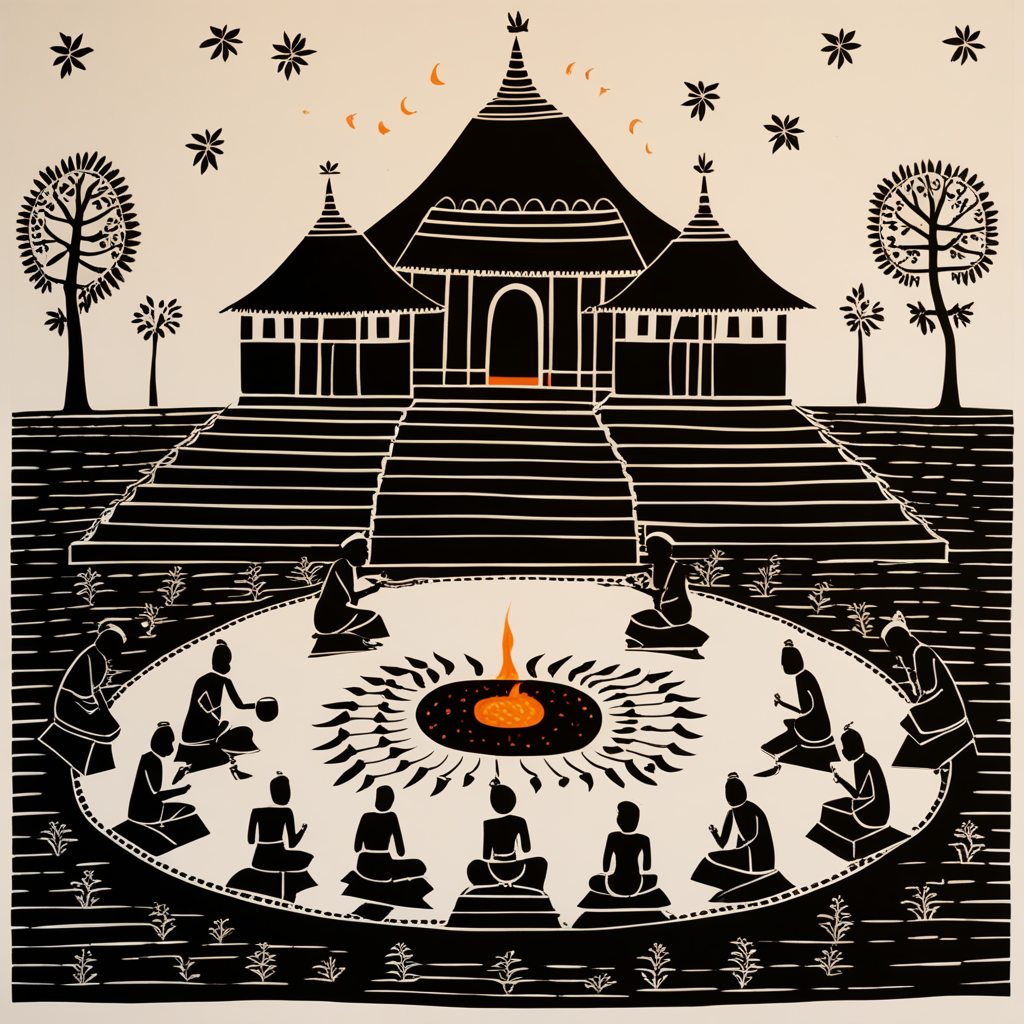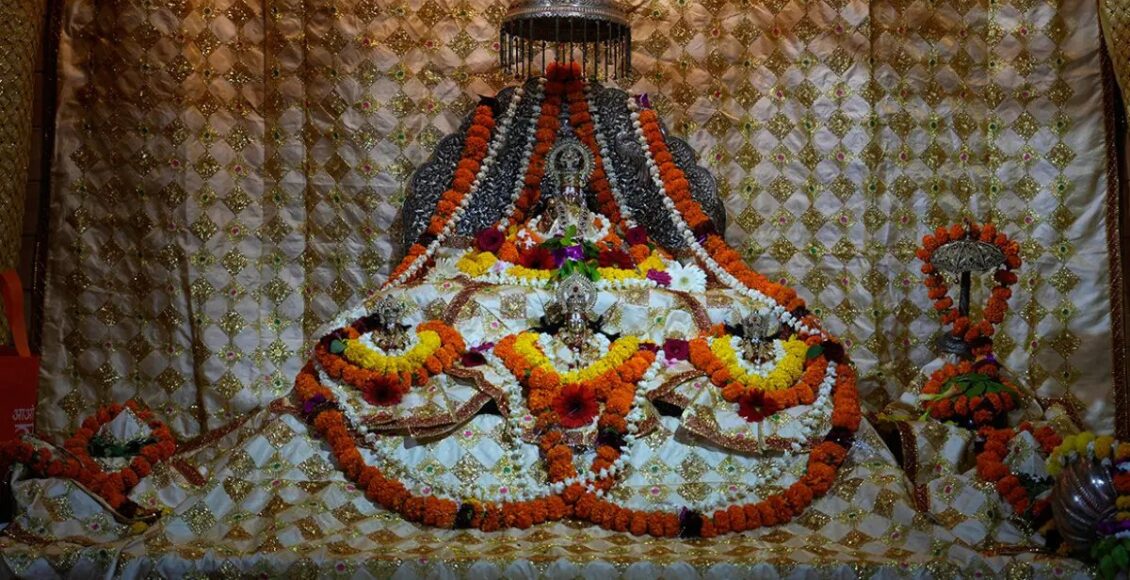What is Pran Pratishtha
Explaining The Sacred Ritual of Pran Pratishtha
The word Prana means the vital life force or energy without which the body cannot survive and function. Pratishtha means to fix or establish permanently. So through Pran Pratishtha, the pujari invokes and fixes the Prana or divine energy permanently within the Murti, bringing it to life.
Pran Pratishtha is one of the most important rituals practiced in Hinduism. It refers to the consecration of an idol or murti of a deity through the act of invoking the presiding life energy or prana into it. By performing elaborate rituals with mantras and hymns, the murti is believed to become a vehicle for the deity to reside in and receive worship from devotees.
Pran Pratishtha is described in great detail in ancient Sanskrit scriptures like the Vedas, Puranas, Upanishads and Tantras. According to these sacred texts, the proper consecration of an idol is essential to establish a link between the divine and the worshippers. As per the scriptures, only a spiritually enlightened individual who has Paramanand residing in every part of his being is eligible to conduct the rituals of Pran Pratishtha. This is because to invoke the Paramatma or the supreme soul within the Murti, the person conducting the rituals must have attained that level of purity and oneness with the divine. The Panchratra Agama Samhita mentions that such a Mahapurush or great soul alone is qualified for this important task.
There is an important distinction made between Pratistha and Pran Pratistha. In Pratistha, the murti is ceremonially installed but requires regular pujas and rituals to be continuously performed in order to maintain the presence of the deity. Failing to do so regularly could lead to the absence of divine energy from the murti. On the other hand, in Pran Pratistha, the life force is permanently installed within the murti through the process, so it does not need constant maintenance afterwards.
Before the all-important process of Pran Pratishtha can begin, elaborate rituals of purification and cleansing are carried over multiple days to prepare the Murti. This includes rituals like Karmakutir to remove any residual energy from its creation, Jaladhivas and Ghrutadhivas for a thorough cleaning, Abhishek or bathing with sacred substances, Netra Anvaran to symbolically open its eyes, and more.

Here are the details of the procedures that the Purohit needs to conduct before consecrating the deity and invoking both the divine and spiritual elements.
- Karmakutir: Purifying the idol from the artisan’s place.
-
- The idol is touched with Darba grass to remove any negative influences.
- The pujari closes the eyes of the Murthi by applying a layer of honey and ghee along with specific mantras.
- Two hundred oblations are made with mantras during this process.
- A Nada-Chhadi (Mauli/kalava/kautuka) is tied to the Murthi’s right wrist.
- Jaladhivas: Checking the completeness and potential damages of the Murthi.
-
- The Murthi is brought to the Yagna Mandap (the place for performing Yagna).
- It is immersed in water, and the pujari checks for any damages.
- Panchamrut (a mixture of five items) is added to the vessel containing the Murthi.
- The Murthi is covered with a clean cloth.
- Agni Mantras are chanted, and the Murthi is awakened by ringing a bell.
- The Murthi is then wiped dry.
- Dhanyadhivas: Purifying the Murthi using Dhanya or gains.
-
- The Murthi is placed on Dhanya, and more Dhanya is used to cover it for purification.
- Ghrutadhivas: Submerging the Murthi in cow ghee for further purification.
-
- The Murthi is immersed in cow ghee.
- In some cases, a piece of cotton wool soaked in ghee is placed on the toes of the Murthi.
- After completion, the Murthi is awakened and placed on a wooden stand.
- Snapan or Abhishek: Bathing the Murthi with purifying substances.
-
- The Murthi is bathed with either milk or water.
- 108 different materials are placed in pots in front of the Murthi.
- The pujari pours these contents on the Murthi, purifying and empowering it.
- Netra Anvaran: Using a mirror to remove ghee from the Murthi’s eyes.
-
- The pujari holds a mirror in front of the Murthi while delicately removing ghee with a golden needle from the Murthi’s eyes.
- Shodshopchar Puja: Placing the Murthi in its final position within the inner sanctum.
-
- The Murthi is placed on a new mattress, invoking the Nidra Devi (goddess of sleep).
- The Anawan Mantra is chanted during this process.
- Overnight, 200 Homas are performed away from the idol.
- In the morning, the Murthi is awakened by sprinkling ghee mixed with water, and it is placed in the Garbha Griha (inner sanctum) with the recitation of Mangalashtak.
During these rituals, mantras from our scriptures like the Vedas and Agamas are chanted to progressively infuse the Murti with pious vibrations and shudhdhi. Only after successful completion of all preparatory rituals, does the Murti become fully eligible for receiving the Pran Pratishtha.
The key steps involved in Pran Pratishtha begin with Nyasa, where the Pran Shakti or life force of the pujari is systematically invoked and transferred to different parts of the Murti through symbolic gestures and mantras. This infusion begins with Prana or life breath, followed by Jiva or individual soul and lastly the ten indriyas or senses.
Steps in Pran Pratishta: Infusing Life into the Divine
After the meticulous preparations in Murthi Pratishta, the subsequent and pivotal phase is Pran Pratishta. This sacred process unfolds as follows once the Purohit places the Murthi in the inner sanctum, facing east.
Nyasa: Initiating the process after cleansing, dressing, and seating the idol.
The Purohit tenderly touches different parts of the Murthi, emphasizing the sense organs. Symbolically, each part represents specific deities; for instance, the hands symbolize Indra Dev, the heart represents Lord Brahma, and the eyes embody Surya Dev.
Nayas: Facilitating the entry of divine shakti into the Murthi.
The Purohit channels divine energies, including Prana (life-breath), Jiva (soul), and the ten Indriyas (senses), into the Murthi. This step marks the infusion of life into the idol, transforming it from a physical representation to a vessel of divine essence.
Purification with scented water and flowers: Further sanctifying the Murthi with purifying substances. The Purohit sprays scented water and showers flowers on the Murthi. Mantras are chanted during this process, invoking spiritual vibrations that enhance the divine presence within the idol.
Netra Anvaran: Opening the eyes of the Murthi, signifying its awakened state. In certain traditions, the Purohit performs Netra Anvaran, delicately opening the Murthi’s eyes. This step is symbolic of the Murthi transitioning from a dormant state to an awakened, divinely conscious entity.
Completion of Pran Pratishtha : Following the aforementioned steps, the Murthi attains the status of an auspicious deity. It is now ready to reside permanently in the inner sanctum, radiating divine energy and sanctity.
The Murti is now transformed – from being an external physical object, it has become the living form of the deity, dwelling permanently in the inner sanctum ready to fulfill the wishes of its bhaktas. From this point onwards, the deity responds through signs during Abhishekams and communicates its pleasure or discontentment through pujaris.
The significance of Pran Pratishtha lies in the unique spiritual power it endows. By invoking the deity within, it enables one to experience its blessings during worship or darshan. The awakened Murti serves as a channel connecting our material world with the divine. It also removes any negative vestiges from its previous inanimate state, making it pure and holy.
Through the mighty rituals accompanying Pran Pratishtha, the divine force is permanently anchored in the physical structure of worship. Providing an eternal link for bhakti, this allows the devotee to progressively elevate themselves on the spiritual path. The awakened Murti becomes the sacred object of faith, helping one progress towards self-realization.
In essence, the sacred ritual of Pran Pratishtha is the pinnacle of Murti Pratishtha – it is what truly brings the deity to life within the physical frame of worship, thereby transforming the idol into a direct channel between the material and spiritual realms. The ceremony exemplifies Sanatana Dharma’s emphasis on invoking the divine in physical form for worship. By enlivening murtis through this ritual, it bridges the human-divine relationship and lays the foundation for Hindu mandirs and devotional practices that are centered around the ceremonial worship of deities’ earthly incarnations. Pran Pratishtha thus plays a defining role in continuing Hindu traditions of divine invocation for future generations.
Acknowledgment: This article draws information from diverse texts and sources to present a comprehensive overview. Some of the sources are listed below for reference.


Comments are closed.